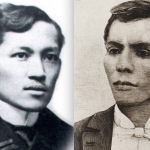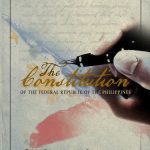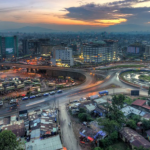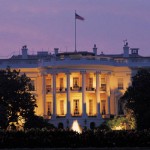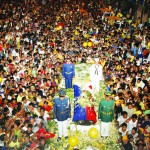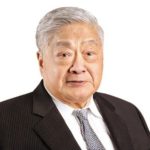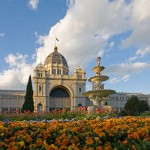Exposing Esposo
(This article is dedicated to the late William Esposo, a man who took it upon himself to expose his own ignorance in the field of economics and showed his true colors as being nothing but a lackey of oligarchs [he was an oligarch himself] in the Philippines.
May there be no more foolish writers in the Philippines who will follow in his footsteps in trying to defend the rotten status quo. This one’s for you, Billy.)
A little over a month ago, on the 16th of January, I released an article entitled “Why Charter Change is CoRRECT™” in which I laid out the general principles behind the CoRRECT™ Movement, whose full name is “Constitutional Reform & Rectification forEconomic Competitiveness & Transformation.”
Not too long after, on the 23rd of January, an extremely poorly-researched article came out of the Philippine Star authored by erstwhile pro-Oligarch pundit William Esposo entitled “Wrong Solution to the Wrong Problem”, in which Mr. Esposo derided the now snowballing clamor for Constitutional Reform spearheaded by the CoRRECT™ Movement (as an umbrella coalition) together with numerous similarly aligned pro-Constitutional Reform groups with responses that were laughably full of factual inaccuracies and logical lapses.
Mr. Esposo opened up his article, to wit:
“Here we go again. Some people want to dance the Cha cha again. Cha cha is of course the adopted moniker for Charter change, a revision of the 1987 Philippine Constitution.
It is largely suspected that Cha cha is being promoted with the use of “economic” boosters as its front but in reality — it’s the Trojan Horse of people with sinister personal and selfish motives. The more popular “economic” boosters being floated are:
1. Opening the ownership of Philippine land to foreigners.
2. Removing the 40 percent ownership limit of foreigners in Philippine corporations.”
Mr. Esposo needs to be corrected as the CoRRECT™ Movement is not that aggressive in pushing for the removal of land-ownership restrictions (number 1), and instead concentrates its efforts on pushing for the removal of the 40% ownership limit on foreigners and foreign investors in corporations in the Philippines.
It would certainly be a big bonus if restrictions on the ownership of land were to be removed from the Constitution as land ownership restrictions or special requirements that would qualify certain foreigners into owning land could instead be legislated more flexibly. That being said, the CoRRECT™ Movement emphasizes the much greater urgency and importance of removing the 60/40 protectionist provisions which are making the Philippines one of the most restrictive investment destinations in a region where 100% foreign-owned investments are fueling economic growth in the various neighboring countries such as Vietnam, China, India, Singapore, Malaysia, Indonesia, and many more.
Going back to Mr. Esposo’s statements on the land issue, he then went on to say:
“If we’re a big country like the US then it could be alright to allow foreigners to own Philippine land. Seeing that we’re a small country which is hardly the land area of the US State of California, this proposal is idiotic.”
If everyone were to analyze the issue carefully, if Billy Esposo were looking for the truly idiotic one he just needs to directly face a mirror and point at it. (Sorry, Mr. Esposo, you started off calling out-of-the-box thinking as “idiotic”)
Let us review:

Monaco is a teeny-weeny principality, yet it allows foreigners to own land.
If indeed we were to acknowledge Mr. Esposo’s flawed knee-jerk reasoning, then why are the teeny-weeny countries of Europe – much smaller than the Philippines – such as the Benelux countries (Belgium,Netherlands, and Luxembourg – all of whom have zero restrictions on foreign land ownership), as well as Monaco (zero restrictions), Liechtenstein (foreigners must be residents to buy land), and Andorra (permits ownership based on certain requirements), all allowing foreign ownership of land? (Caveat: Liechtenstein & Andorra have certain requirements)
Why does teeny-weeny Singapore allow foreigners to own land? (There is, of course, a need to get certain approval to qualify for owning landed property, but usually, business owners operating in Singapore who create jobs easily get it.)
(Since mid-2005 foreigners can buy apartments (known as strata-titled properties) in all buildings without needing approval from the Singapore Authorities. Previous rules about the apartment block needing to be higher than six storeys and classified as a condominium no longer apply.
A foreign person (any person who is not a Singapore citizen, Singapore Company, Singapore limited liability partnership or a Singapore society) will still need approval from the Singapore Land Authority (SLA) to buy land-titled property such as houses, bungalows and vacant plots of land.)
Why does Malaysia allow foreigners to own land? (There are size restrictions that require special government approval or opting into special programs for investors, retirees, or others. In general, Malaysia is even ranked as being more liberal with foreign land-ownership than Singapore.)
Taiwan and South Korea both allow foreign land ownership based on a reciprocity principle: Citizens of countries that allow Taiwanese or South Koreans to own land can also own land in Taiwan and South Korea.
Thailand, for instance, also allows full foreign land ownership, albeit there are certain requirements such as investor status or special approval from the government.
Outside of the Philippines, a large number of developed countries as well as highly-progressive and fast-rising developing countries have provisions that allow foreigners to outright own real property or land or allow them to meet certain requirements that would qualify them to legally purchase and own land. In the Philippines, foreigners are specifically limited only to being able to purchase condominiums. On the other hand, foreigners who are permanent residents or are married to Filipinos / Filipinas are forced to purchase land in their spouses’ names because there is a total ban on foreigners owning land – even for business purposes that would help create jobs for Filipinos.
Just the same, Billy Esposo still went on to spew out some more factual inaccuracies as he said:
“It also did not occur to the legislators pushing for this that China and Vietnam — two Asian countries that are attracting the bulk of foreign investors — do not allow land ownership by foreigners.”
Firstly, both China and Vietnam – being Communist Party-controlled, and being based on Socialist principles of collective ownership – subscribe to highly “Georgist” (based on the philosophy of Henry George) or “Geoist” principles where man can only own that which man can make. Since land is not made by man, it cannot be owned by man. And thus, land is ultimately under State custodianship and then merely leased out in “sub-custody” to long-term lessees or owners of transferrable (and resalable) “land-use rights.” In short, no one owns the land – not even Chinese or Vietnamese citizens, only the State does.
That being said, the systems in both China & Vietnam recognize that the improvements (physical structures, houses, buildings, factories, etc) made on top of leased land as well as the land-use right can be owned, and thus, a system that is, for all practical purposes, similar to land-ownership actually exists.
If we were to consider this as a “time-bound” alternative form of “ownership” of land-use rights and the improvements made on land, we thus find that Mr. Esposo’s sweeping generalization that Vietnam & China “do not allow land ownership by foreigners” iswrong. From here on, when talking about “land ownership” in Vietnam or China, we will be referring to land-use rights which are transferrable (often called “leasehold property”) and can be purchased and sold just like any normal property under the default “fee simple” model of land ownership common in the USA and the Philippines.

外灘 – The Shanghai Bund was a result of foreign investment; When they left China, the foreigners couldn’t take the buildings or the land with them. But Esposo clearly didn’t know that.
Certainly, both China and Vietnam do not match the liberal land-ownership schemes found in countries like the USA and several others (including several European countries previously mentioned), where foreigners even those without special residency status may purchase, own, and sell “freehold” fee-simple land. However, to say that both Vietnam and China “do not allow land ownership by foreigners” is definitely wrong as both countries have created schemes that allow foreigners to own leasehold residential property as well as property related to running a business (a factory, etc) at full 100% ownership. Moreover, foreigners who buy leasehold property are easily able to sell-off their property at a profit, which essentially makes the distinction between freehold (fee-simple) and leasehold property irrelevant.
Even before 2007, China had already allowed expatriates who lived in China for a year to be eligible to purchase leasehold property as personal residence, as long as they could prove that they were going to be the primary users of the residential property and were likewise limited only to one property. Foreigners wanting to purchase property for commercial purposes could still do so, except that this had to be done through a Corporate-Entity known as a “Wholly Foreign-Owned Entity” (WFOE) or through an Equity or Contractual Joint Venture (JV). The WFOE scheme allows full 100% ownership by foreigners, and also required certain residency and business-visa status.
In 2007, China made changes that further relaxed such restrictions.

Saigon Night Skyline
As for Vietnam, we find that leasehold property is treated somewhat similarly to pre-2007 China’s laws which allowed foreigners who had residency status were allowed to buy, own, and sell one residential leasehold property. The Vietnamese Law Consultancy website states:
“In accordance with the legal provisions currently in force, foreigners permanently residing in the country are only entitled to ownership in respect of movable property, but not real property located in Vietnam except residential houses. In accordance with Decree 60/CP issued in 1994, a foreigner who is a permanent resident in Vietnam can only have ownership in respect to one house for himself/herself. Foreigners who are not permanent residents in the country are not entitled to ownership in respect of real property located in Vietnam. (In accordance with article 181 of the Vietnam Civil Code, real property is the type of property which cannot be moved or relocated and includes items of property fixed to residential houses and residential building works; other assets fixed to land and other assets provided for by the laws.)
Foreign investors in Vietnam are categorized as foreigners who do not permanently reside in the country, but in practice, they enjoy a particular status in respect to ownership of real property in the country notwithstanding the absence of specific provisions of Vietnamese law. In particular, foreign investors are entitled to joint ownership in respect to factories, enterprises, warehouses and other types of real property that they contribute to the capital of joint venture enterprises. The ownership of foreign investors in these cases is proportionate to their capital contribution to the joint venture, and, as a matter of course, they are also entitled to joint ownership in respect of the products produced by and other types of movable property of the joint venture. Where foreign investors invest 100 percent capital to establish the factory, enterprise and warehouses and/or other real property in Vietnam, the property and products produced by their enterprises are absolutely in their ownership.
Foreign investors do not have the right to own land in the country; this applies even to Vietnamese individuals and organizations pursuant to the provisions of the 1992 Constitution of Vietnam which stipulates that land is of the state under the ownership of the whole nation.
It is noteworthy that only during the duration of investment in Vietnam the foreign investors have the ownership in respect to the real property that they contributed as capital or which was 100 percent created by their invested capital. Upon the expiration of their investment duration, if no extension is granted or the foreign investors do not apply for any extension, the foreign investors are not permitted to maintain their ownership in respect to the real property they contributed as capital or invested 100 percent in its establishment. In those cases, the foreign investors must deal with their property by way of transferring it to a Vietnamese party or by other means in accordance with the provisions of Vietnamese law.”

The concept of LEASEHOLD properties is common in the British Commonwealth
It was essentially made clear that land per se cannot be owned by individuals – both locals and foreigners. Therefore, there is no real preferential treatment in both China or Vietnam with respect to land ownership. No one truly owns the land except the state, and this paradigm helps immensely in preventing or at least drastically-reducing speculative purchases of land.
Fee simple “Free hold” land is oftentimes in danger of being purchased by speculators with no intention to develop the land for productive use, and this is unfortunately the situation in the Philippines as numerous Filipino speculators buy land, keep it idle, and wait years on end without developing the land while waiting for the value to appreciate before selling it at a profit. The leasehold concept introduces a time-bound concept that forces land-use right buyers to make calculated purchases that coincide with real land-development plans.
As everyone can see, Mr. Esposo has clearly attempted to misrepresent the facts regarding land ownership. He tried to use land-size as an excuse to explain away why the USA can afford to allow land-ownership by foreigners, but he failed to take into account how small principalities of Europe or countries smaller than the Philippines such as Belgium, the Netherlands, or Malaysia actually allow foreigners to own land. He also tried to use the examples of both China and Vietnam, conveniently ignoring the fact that for all intents and purposes, both China and Vietnam have prohibited free-hold of land for all individuals – both foreign and local, yet they allow the purchase, ownership, and sale of leasehold properties by foreigners just like they do locals.
Either Mr. Esposo is someone who simply does not know the facts and is too lazy to do the necessary research or he is a malicious liar out to deceive the public.
But it doesn’t end there. Billy Esposo continues on in spreading ignorance by stating:
“It is also reckless to allow foreigners to own more than the 40 percent limit in Philippine corporations. We are in our worst economic situation at this time and removing this provision is tantamount to giving foreigners the full run of our economy. We need more Danding Cojuangcos, Manny Pangilinans, Jaime Zobel de Ayalas, John Gokongweis et al and not the Donald Trumps et al.”

Esposo foolishly insulted MVP, Mr. John, and Don Jaime by implying that they require protectionism for them to succeed.
Mr. Esposo once again blatantly displays his ignorance of the facts and of history. He pontificates by telling us that it is “reckless to allow foreigners to own more than the 40 percent limit in Philippine corporations” (As found in the current Constitution), yet he does not even attempt to explain why! He expects us thinking people to just accept his word without providing proof, facts, evidence, and information to back his statements up.
More importantly, he totally ignores the fact that the rest of the progressive world and all fast-growing economies have already either allowed foreign investors to come in with 100% ownership of the companies they set up or are quickly dismantling whatever protectionist policies some of them may still have.
The man simply has zero knowledge of the strategy that Singapore made use of as a means to create massive employment opportunities for their people at a time when the British Military bases were about to leave and were threatening to leave tens of thousands of Singaporeans jobless as a result of the pull-out. Lee Kuan Yew simply refused to listen to the prevailing developmental dogma of the time which was that “protectionism was necessary to keep patrimony in the hands of local citizens” and that “foreign multinational corporations” (often referred to by Filipinos Leftist & Pseudo-Nationalist dinosaurs as “Transnational Corporations”) were “evil.”
From pages 57-58 of “From Third World to First”, Lee Kuan Yew says:

Lee Kuan Yew tapped MNC’s in order to create jobs and develop Singapore’s economy from Third World to First
The accepted wisdom of development economists at the time was that MNC’s were exploiters of cheap land, labor, and raw materials. This “dependency school” of economists argued that MNC’s continued the colonial pattern of exploitation that left the developing countries selling raw materials to and buying consumer goods from the advanced countries. MNC’s controlled technology and consumer preferences and formed alliances with their host governments to exploit the people and keep them down. Third World leaders believed this theory of neocolonialist exploitation, but Keng Swee and I were not impressed. We had a real-life problem to solve and could not afford to be conscribed by any theory or dogma. Anyway, Singapore had no natural resources for MNC’s to exploit. All it had were hard-working people, good basic infrastructure, and a government that was determined to be honest and competent. Our duty was to create a livelihood for 2 million Singaporeans. If MNC’s could give our workers employment and teach them technical and engineering skills and management know-how, we should bring in the MNC’s.”
Following the advice of Dutch economist and UNDP economic planning consultant Dr. Albert Winsemius, Lee Kuan Yew developed an open-economy strategy of allowing 100% foreign ownership of companies, molding governmental policies to comply with the preferences and requirements of said multinational corporations in seeking to make Singapore a highly attractive location for investment, with the obvious intention of continuing to create more and more employment opportunities for Singaporeans. This was meant to cause jobs and corporations to compete against each other by raising salary offers to applicants. It’s all simple law of supply and demand: The more jobs there are, competing against each other for the few job-seekers, the higher the wages become. Conversely, if there are more job-seekers than there are jobs, it is the job-seekers who compete against each other for the scarce jobs, and thus, salaries are bid downwards.
The latter is obviously the case in the Philippines.
In a shameless effort to ingratiate himself to the handful of Filipino tycoons and rich families, Esposo even sought to flatter Danding Cojuangco, Manny Pangilinan, the Zobel de Ayalas, and John Gokongwei, when the problem of the Philippines is simply that there are just too few of these rich enough people to invest in businesses and corporate expansion, and our 95+ million people, including the 10+ million overseas Filipinos do not have the luxury of time to wait for new Filipino tycoons to emerge.
Worse, he was actually insulting “Mr. John”, MVP, and Don Jaime when Esposo implied that these tycoons require Constitutional Protectionism in order to survive and thrive in the Philippine economy, instead of recognizing that their competence and acumen is such that they can actually compete regardless of foreign competition. John Gokongwei’s Jack & Jill, for instance, is sold and exported abroad and is a strong product that non-Filipinos enjoy.
(On a side note: The Chan family’s snack brand Oishi, known in China as 上好佳 – “Shang hao jia”, is China’s children’s most popular snackfood. When I was living in China and people found out I was Filipino, they always said “Shang hao jia!” …Competent businessmen do not need protectionism to succeed!)
Filipinos need jobs now, and to paraphrase Deng Xiaoping’s favorite Sichuanese proverb:
Original:
“不管黑貓白貓,抓到老鼠就是好貓”
(“buguan heimao baimao, zhuadao laoshu jiushi haomao”)
“It doesn’t matter if it’s a black cat or a white cat, if it catches mice, that’s a good cat.”
My version:
“It doesn’t matter if it’s a foreign company or a local company, if it creates jobs for Filipinos, that’s a good company!”
It truly is jobs that matter. If Esposo learned to analyze properly and decided to open his eyes to the obvious reality, he would have noticed that Filipinos are desperately trying to leave the Philippines in droves just to find overseas employment. Be they Filipinos with high-flying qualifications and desired skills who emigrate together with their entire families to countries like Canada, Australia, New Zealand, or to a lesser extent, the USA (they’ve made it harder to go there), or individual Filipinos forced to leave their families in the Philippines while they work abroad in the Middle East, Singapore, Malaysia, or elsewhere, the fact remains that Filipinos leave the Philippines simply because of economic reasons and the obvious dearth of jobs in the Philippines.
Mr. Esposo is one such person who simply cannot see how much better it is to bring in hundreds or thousands of Foreign Companies to come to the Philippines and massively create local jobs for millions of locally-based Filipinos, than it is to send Filipinos abroad and away from their families and loved ones to foreign lands in order to be employed by foreign companies.
Unbeknownst to Esposo, the biggest show-stopper that prevents foreign companies from coming to the Philippines to create jobs is the Philippine Constitution. Whereas China, Vietnam, Singapore, Malaysia, Indonesia, India, and many others do not have Constitutional Restrictions on foreign ownership of corporations, the Philippine Constitution continues to block a large number of foreign companies from coming in by imposing 60/40 protectionist requirements. Either they find a rich oligarch to partner with or they simply can’t invest.
In the meantime, Vietnam is happily taking in all the companies who have all tried to come to the Philippines to take advantage of our English Ability and relatively high quality of human resources, by simply telling the would-be entrants to the Philippines that “The Philippines does not allow 100% foreign ownership, we in Vietnam do… Plus we’re willing to give you tax holidays and other freebies: Come to Vietnam!” Many such companies would have preferred the Philippines over Vietnam because of our English ability and greater affinity to Western or American standards, but because Vietnam’s economic provisions are way more pro-business and pro-foreign investor than the Philippines, Vietnam scoops up a huge number of investments originally meant for the Philippines.
Going back to the Singapore story, Esposo is obviously ignorant of the fact that China’s economic boom is actually directly traceable to Singapore’s open-to-foreign-investment strategy.

Mao Zedong was a pathetic failure when it came to Economics
After having suffered pretty much two decades of economic mismanagement under Mao Zedong’s Communist planned economy – some 10 years of the Great Leap Forward (which actually went backward), and another 10 years of the Cultural Revolution, China was ready for change when Deng Xiaoping came to power after Mao Zedong’s death.
(Mao used the Cultural Revolution as a means to punish his own fellow Communist Party leaders who had criticized his failed policies during the Great Leap Forward by tapping into the clueless, young, rabidly frothing-at-the-mouth Red Guards by building a Mao-centered personality cult around himself, and used the Red Guards to denounce, humiliate, and exile those Council Members who had proposed corrective measures against Mao’s disastrous economic policies. One of those who was denounced, purged, humiliated, and exiled to the countryside was Deng Xiaoping)
Deng did state visits all around the region and the World in order to learn more about what other countries did to develop their economies. One country that totally struck Deng Xiaoping was Singapore. During the Great Leap Forward and the Cultural Revolution, Singapore was one of those states that Maoist Propaganda denounced as being “Capitalist running dogs” and tools of Imperialism. The propaganda tried to present all those countries as being weak, poor, exploited by colonialists, and unable to get their acts together. But during Deng Xiaoping’s visit, he saw a rich, prosperous, well-ordered society that was heads and shoulders above China in all ways. And he asked Lee Kuan Yew what their secret was and Lee answered without hesitation: Foreign Investors and an Open Market Economic System.
Deng was convinced. He no longer needed to read through 50 page “business value proposition” plans that would recommend shifting to Singapore’s free market system. He saw the difference between Mao’s China and Lee’s Singapore and saw how far behind China was. He endeavored to get his fellow Communist Party Council Members agreeing on the need to adopt Capitalism and the Market Economy as well as the need to bring in Foreign Investors, and of course, he got weird looks from all kinds of dyed-in-the-wool fellow Communists who believed in “From each according to his ability, to each according to need.” It was in such an instance that Deng Xiaoping famously wittily issued his retort by citing his favorite Sichuanese Proverb of the Black Cat and the White Cat.
Hesitantly, his party-mates accepted his proposal by allowing him to create a small pilot test-site to serve as a kind of proof of concept. He then proceeded to choose a small fishing village not too far from then British-controlled Hong Kong. The sleepy village, known as Shenzhen, saw China’s People’s Liberation Army cordon off a huge area of unused land with barbed-wire fences, and then went on with the task of building roads and other infrastructure.
Right after the project, Deng persuaded thousands of Hong Kong businesses and other foreign-owned companies operating out of the then British-controlled Crown Colony of Hong Kong to set up their manufacturing plans and facilities in Shenzhen in order to take advantage of the lower cost of land-lease as well as the much lower labor costs.
As years went on, the project was a success. Shenzhen became a modern city and served as a showcase of how Capitalism and the Free Market Economy could help Mainland Chinese lift themselves out of poverty. Shenzhen also showed how a vibrant Capitalist-run economy could end up having more funds for the city government (as a result of taxation) for many social and infrastructure projects. Not long after, the lessons learned from Shenzhen’s success story which all ultimately came from Singapore’s “pro-Foreign Investment” economic system was replicated throughout China. Today, China is the 2nd largest economy in the World, surpassing Japan, and clearly, the rapid economic boom continues on.
Fast forward to 1991, India itself was on the verge of economic collapse and bankruptcy. The IMF and World Bank had told then prime minister, the late Narasimha Rao, that they were not going to be able to lend any more money unless major structural reforms were undertaken to change the highly sluggish and over-regulated protectionist economy of India. Back then, India had long subscribed to the concept of Gandhian Minimalism, preferring small-scale locally-owned villeage-based cottage industries. Home-spun cloth was seen as “more Indian” than industrially woven cloth. Small-scale businesses were more in line with Gandhi’s philosophy than big business. And the laws of the land reflected this. Not only were importing and foreign companies heavily restricted or outright prohibited, special laws were set up to prevent large companies from emerging. The moment a company became large, it was required to spin-off into smaller companies.
It was because of this highly idealistic but impractical economic strategy that an Indian economist Dr. Raj Krishna described India in the 1970’s as having a lethargic “Hindu Rate of Growth”, evoking images of Fakirs, Sadhus, and Yogis doing self-denying stationary poses, being steady and unmoving – just like India’ economic growth rate.
But since the IMF and World Bank wouldn’t allow these to continue, PM Rao decided he needed professional help. He immediately tapped into the highly competent economist Dr. Manmohan Singh to become Finance Minister and asked him for a plan of action. Aside from immediately easing certain business restrictions and economic policies, Dr. Singh proposed studying “the other large country” – China – and thus an Indian delegation was sent to China to observe how they did what they did.
The difference was staggering: China’s airports were well-maintained, after getting off the plane and out of the airport, the roads were first class. The Indians wondered what it was that allowed China to enjoy such high standards of infrastructure. Deng Xiaoping told them about the foreign-owned corporations who hired millions of Chinese laborers and office workers, whose tax contributions helped fund all the infrastructure developments as seen in the airports, roads, and bridges.
Immediately upon returning to India, reforms continued on at break-neck pace. Whatever protectionist restrictions that used to exist were now dismantled and foreign companies came into India. Looking for low-hanging fruit to dangle to foreign, especially American companies, India presented its highly-educated, professional, and English-speaking white-collar workforce to American companies. The proposal was simple: Whatever white-collar job that Americans could do, Indians could do at a fraction of the cost. Be it answering phones, processing accounting forms, encoding data, etc, India pioneered the Call Center and Outsourcing industry as a means to save its economy, provide jobs for millions upon millions of its highly-trained English-speaking new graduates and underemployed citizens and to move away from India’s decades-old “Hindu Rate of Growth.”
If Mr. Esposo read more books and did more research, he would have been cured of the ignorance that he has recently displayed in his Chairwrecker column. He’d have seen that the secret to China’s and India’s success was their decision to follow Singapore’s “100% Foreign Investment” model as a means to create job opportunities for their people. In the 1980’s, when Malaysia’s Mahathir bin Mohamad became Prime Minister, he too took his cue from Singapore and actively pursued a policy of allowing 100% foreign ownership in numerous economic sectors, thus creating Malaysia’s highly-competitive manufacturing and IT sector. In a bid to compete with Singapore, Malaysia even went on to provide numerous incentives for Multinational Companies who would set up their 100% foreign-owned Asian Regional HQ’s in Malaysia instead of Singapore. This move once again created so many new jobs.
Esposo needs to get himself a copy of Lee Kuan Yew’s book “From Third World to First” so that he can read for himself the story of Singapore’s tapping into Foreign Investors and MNC’s as a means to create jobs. That way, Mr. Esposo will read the following quotes from Lee Kuan Yew’s book, from page 62:

Esposo should have gotten a copy of this book
And from page 66:
“We did not have a large group of ready-made entrepreneurs such as Hong Kong gained in the Chinese industrialists and bankers who came fleeing from Shanghai, Canton (Guangzhou), and other cities when the communists took over. Had we waited for our traders to learn to be industrialists we would have starved… It is absurd for critics to suggest in the 1990’s that had we grown our own entrepreneurs, we would have been less at the mercy of the rootless MNC’s. Even with the experienced talent Hong Kong received in Chinese refugees, its manufacturing technology level is not in the same class as that of the MNC’s in Singapore.”
Billy Esposo clearly belongs to the dinosaur generation. The man simply does not have what it takes to be relevant in this day and age and should just retire from spreading false information and lies.
But his ignorance did not stop there. He went on to say:
“The biggest argument against Cha cha at this time is this — it is the wrong solution to the wrong problem. We can revise our Constitution again and again in the next 10 years but that won’t get us anywhere if we do not repair our damaged culture and improve the Filipino mindset. The real problem is not what the Philippine Constitution allows or disallows but what is in the minds and hearts of Filipinos — how we think, feel, act and react as a people.
Cha cha will not reform the people and political players who suffer from a damaged culture. A good, strong president has better chances of reforming a nation’s damaged culture. The problem is not the Constitution but the culture of our people.”
The question needs to be asked: How can a president have better chances of reforming a nation’s damaged culture if the manner in which a Philippine President emerges is itself damaged so that instead of the most competent candidate(s) emerging at the top, those who do emerge happen to be those with the highest winnability rating, that is, they are the ones with the most name-recall or the most popularity, yet more often than not , they are also the candidates who are utterly lacking in competence and ability?” Worse, how can that be possible with the current 1987 Constitution when the presidents who emerge are always turning out to be minority presidents because there is no run-off election to trim down the contenders to only two if there are so many candidates?
Indeed, we can all see that Mr. Billy Esposo has done nothing but pontificate without providing a single shred of evidence to back up his extremely weak claim that the “problem is not the Constitution but the culture of our people”, especially since it is obvious to Social Scientists, Political Scientists, Anthropologists, Organizational Development & Human Resource Professionals that Systems influence (and sometimes even determine) Culture, and on the macro “society” level, it is the Constitution that determines the type of system that we end up with.

Systems can change destiny since systems change culture!
Mr. Esposo is another one of those people who knows very little about the social sciences or culture, as he is unable to see how culture is by itself a system and realize that cultures are the products of different systems. He also fails to see that the 1987 Constitution, with all its flaws in creating a system that consistently produces weak minority presidents plus a non-constituency Senate, explicitly specified economy-hindering protectionist economic provisions (when it could have instead just kept mum on it just as a majority of the world’s constitutions do not make economic restrictions in their constitutions). Most other countries of the world, instead of making explicit mention of specific economic restrictions in their respective constitutions, chose instead to relegate economic policy-making to the realm of legislation in order to have more flexibility in making changes if and when conditions change.
Since Mr. Esposo is grossly uninformed and ignorant about the facts of “Culture Change”, he needs to read a bit more about how cultures can be improved. He needs to arm himself with a copy of B.F. Skinner’s “Beyond Freedom & Dignity” to learn more about Behavioral Modification, and Lee Kuan Yew’s “From Third World to First”, where the esteemed Singapore Statesman was able to change the cultures of a mostly impoverished rag-tag motley crew of numerous racial groups and oftentimes mutually-antagonistic ethno-linguistic groups who originally had extremely disorganized, messy, dirty, and unhygienic habits (spitting, urinating, and defecating anywhere) and successfully created a new prosperity-compatible, highly organized, and extremely hygienic Singaporean culture.
It is only because Singapore was able to have an extremely competent, brilliant, and hardworking leader in Lee Kuan Yew due to the meritocratic Parliamentary System bequeathed to them by the British (as opposed to the popularity-centric American system bequeathed to Filipinos by the Americans), that Singapore was able to transform itself. The same can be said of Malaysia, where the brilliant, extremely competent, and equally hard-driving Dr. Mahathir bin Mohamad was also able to emerge at the top of Malaysia’s leadership structure thanks to the meritocratic nature of the Parliamentary System that Malaysia inherited from the British, and was thus able to improve the nature of Malaysia’s (and especially the majority Malay-Bumiputra) culture.
Mr. Esposo needs to enlighten himself further by thinking about the views of the late Harvard political scientist Dr. Samuel Huntington who in a speech delivered at Colorado College on February 4. 1999, said:

The late Dr. Samuel Huntington
“…many studies have ranked countries in terms of their levels of corruption. Again, they breakdown in terms of cultural groupings. The least corrupt countries are Nordic, Scandinavian, or English-speaking; the most corrupt are Asian and African. There is, however, one interesting exception to this pattern, which illustrates an important point. Singapore always ranks right up there with Denmark, Finland, Sweden, Canada, and New Zealand as one of the least corrupt countries in the world, while its Asian neighbors, Indonesia, China, Thailand, the Philippines are among the most corrupt. How can this be explained?
The answer of course is political leadership. Lee Kuan Yew, who ruled Singapore for decades, was determined to create a non-corrupt society and in large part did. He thus exemplifies a most important insight about culture, articulated by Senator Daniel Patrick Moynihan: “The central conservative truth is that it is culture, not politics, that determines the success of a society. The central liberal truth is that politics can change a culture and save it from itself.” And that is what happened in Singapore.”
Before a culture can save it from itself, it really needs to make sure that it gets the best types of leaders. And that means the most competent and most capable candidates, not necessarily the most “winnable.”
As such, it is necessary to put in place a system that can more easily cause the most competent and most capable among a country’s leaders and thinkers to emerge on top. Can the Philippine Presidential System in its current form easily allow the best candidates to emerge on top when the dynamics of the Philippine Presidential elections are such that it is “winnability”(name recall, popularity/celebrity-status), not competence, not track-record, not ability, and certainly not platform, that causes a candidate to win, when we don’t even have a run-off election in order to ensure that we avoid ending up with an electoral winner who merely gets a plurality among more than three other candidates and therefore ends up as a minority president?
Faulty Political System Produces Faulty Political Culture
Mr. Esposo needs to realize that ordinary Filipinos not only have a faulty, damaged general culture, we have a faulty and damaged political culture as well.

Juan Linz, PhD
Due to his refusal to do the necessary research in order to make an impartial and objective assessment on how making changes to the flawed political system can help to fix the damaged political culture of Filipinos, he holds the extremely erroneous view that shifting to a parliamentary system will not do much to improve the behavior and political culture of both the electorate and the politicians themselves. He had better arm himself with the work of Yale’s eminent political scientist Dr. Juan Linz, who in his book ‘The Failure of Presidential Democracy’ (volume 1) particularly in his essay entitled‘Presidential or Parliamentary Democracy: Does It Make a Difference?’, said:
“Political engineers, like engineers who build bridges, should plan for the most unfavorable conditions, although we might hope they will never materialize. Doing so maybe considered wasteful when the additional costs are counted, which in the case of political institution-building are the costs of the innovation, of challenging tradition. As the builders of bridges can never assure that the bridges will not collapse under some extreme circumstances, no constitution maker can assure that the institutions he creates will survive all challenges and dangers and assure a consolidated democracy. However, the accumulated evidence of the past in presidential systems, particularly in Latin America and Asia, and the success of contemporary parliamentary democracies in Western Europe show odds that seem to favor parliamentary institutions.
Innovation is not necessarily good, but to cling to the institutions of the past when they have failed too often and to choose not to innovate is to miss a historical opportunity… I think that the intelligent use of historical opportunity after many failures and dictatorships is evidence that innovation is possible and can be successful. No one in Spain between 1975 and 1978 could have been sure that the experiment would be successful. However, the experience of Spain and other European democracies, particularly the German Republic, shows that innovative leadership and thoughtful constitution making can greatly help to generate the conditions for a stable democracy…
Institutions lead the same actors to behave differently; they provide incentives and disincentives for certain behavioral patterns. My assumption is that parliamentarism would impose on parties and leaders patterns encouraging greater responsibility for governance, greater accountability, and at the same time the need to cooperate and compromise (except when one party gains an absolute majority). Parliamentarism also allows changes in leadership without a regime crisis and continuity without the fears associated with ‘continuismo’ in presidential systems.
In parliamentary system governments can demand from parties (either their own if it had majority or those in a coalition) support in votes of confidence, threatening them otherwise with resignation in the case of lack of support and ultimately with the dissolution of the legislature. The rule of each party and even of each deputy would be clear to the voters, who are unlikely to sanction destructive sanctions by parties. The party that fails to support its prime minister would have to pay a price. In the Spanish experience in recent years, an undisciplined, faction-ridden party (the UCD) was severely punished by the electorate. In fact, one of the main reasons for the UCD’s and the Communists’ loss of support in 1982 was the internal squabbling perceived by the electorate…”
As we zero in on the Philippine context, we all find that generally speaking, the best candidates do not win, and those candidates who do win are oftentimes not the best. Sometimes, in order for the most qualified and most competent candidates to win, they need to pretend to be what they are not. Instead of presenting themselves as the competent and highly intelligent philosopher-king types who can steer the country towards greater heights, the damaged nature of Philippine Political Culture forces competent candidates to pose as movie stars or do song and dance numbers just to get the much needed amount of attention among the public.
It has apparently escaped Mr. Esposo’s mind that the Philippine Political Culture, starting from the Philippine electorate’s general preference for popular incompetents to the Filipino politicians’ turncoatism and lack of party dynamics are all traceable to the very flawed features inherent in the Philippine Presidential System. Mr. Esposo would have known this had he decided to educate himself further by reading Dr. Yuko Kasuya’s book “Presidential Bandwagon: Parties and Party Systems in the Philippines.”
 He would have learned, for instance, that the extremely volatile nature of the party system where politicians frequently switch parties is traceable to the removal of the ability of the incumbent to run for reelection, as determined by Dr. Kasuya’s extensive data-gathering and statistical regression analysis, as she found that political parties have all become ad-hoc groups that work only during election campaigns.
He would have learned, for instance, that the extremely volatile nature of the party system where politicians frequently switch parties is traceable to the removal of the ability of the incumbent to run for reelection, as determined by Dr. Kasuya’s extensive data-gathering and statistical regression analysis, as she found that political parties have all become ad-hoc groups that work only during election campaigns.
In the older 1935 Constitution which allowed incumbent presidents to run for re-election, the presence of the incumbent always ensured that the opposition to the incumbent would consolidate themselves, so that instead of the current system where there are ten or more parties and candidates vying for the presidential elections, in the past, there was always just two or at most three parties fighting it out. As soon as reelection was banned in the 1987 Constitution, thus creating single 6 year term presidencies for duly-elected presidents (as opposed to presidents who were originally vice-presidents who took over as president), the number of contenders in the elections immediately exploded.
Based on the study she made on the Philippine situation which she checked-off against other countries, she concluded the following in the chapter entitled Presidential Term Limits and Party-System Stability in New Democracies:
“…limiting a president to a single term is more likely to destabilize the legislative-level party system than if presidents are allowed to serve multiple terms. Whether or not presidents are banned from immediate re-election affects the presence or absence of the incumbent in presidential elections, which is the driving force of this conjecture. In single-termed systems, the incumbent is always absent in the presidential race, while multi-termed presidential systems retain a higher possibility of incumbent entry. The absence of the incumbent contributes to the fragmentation of the presidential race, which then leads to party-system instability at the presidential level. Furthermore, higher instability in presidential competition destabilizes the legislative-level party system. I tested this claim using the data from 36 newly-democratized presidential countries with regression technique, and the results supported my claim. One implication of this finding is that it is more advisable not to adopt single presidential term limits if one wants to avoid party-system instability.”
There are far too many features that were discussed by Dr. Kasuya which reveal the inherent flaws of the current Philippine Presidential System as prescribed by the 1987 Constitution. It would simply be better for Mr. Esposo to head over to PowerBooks and get himself a copy as it merely costs 350 pesos and will totally enlighten him and cure him of his lack of information. That way, instead of pontificating on matters in which he has absolutely no information backing him up, Mr. Esposo might be more capable of making informed opinions based on solidly-researched empirical evidence.
The Biggest Irony of Esposo’s Opinions
Last but not the least, Mr. Billy Esposo had one totally flawed opinion which actually went totally against his own anti-Constitutional Reform stand: He mentioned that he wanted to change the name of the Phlippines.
“It is also time to change the name of the Philippines to complete the transformation. Name gives identity. The power of a name and its value has long been immortalized in prose, poetry, and religious ceremony. Parents give their children names that have the qualities they wish their children to emulate. No one names his child Lucifer or Satan.”
Has it occurred to Mr. Esposo that in order to change the name of the country, he needs to make changes in the Constitution? Apparently not.
It is thus for this very reason that Billy Esposo has once again exposed his ignorance and lack of analytical ability for the entire world to see. He goes against Constitutional Reform, and yet Esposo espouses changing the name of the Philippines to something else, conveniently ignoring the fact that with all the instances of the words “Filipino”, “Philippines”, and “Philippine” in the Constitution, changes will need to be made to the text.
Who – to use Esposo’s own term – is being “idiotic” now?
Q.E.D. – Quod Erat Demonstratum

This article probably contributed to William Esposo’s demise on April 7, 2013. He was so stressed by the fact that this writer clobbered him. Hey, it was Esposo who started it. He attacked first. This writer simply corrected all of Esposo’s wrong facts.
* * *
About the Author
 Orion Pérez Dumdum comes from an IT background and analyzes systems the way they should be: logically and objectively.
Orion Pérez Dumdum comes from an IT background and analyzes systems the way they should be: logically and objectively.
Being an Overseas Filipino Worker himself, he has seen firsthand how the dearth of investment – both local and foreign – is the cause of the high unemployment and underemployment that exists in the Philippines as well as the low salaries earned by people who do have jobs. Being Cebuano (half-Cebuano, half-Tagalog), and having lived in Cebu, he is a staunch supporter of Federalism.
Having lived in progressive countries which use parliamentary systems, Orion has seen first hand the difference in the quality of discussions and debates of both systems, finding that while discussions in the Philippines are mostly filled with polemical sophistry often focused on trivial and petty concerns, discussions and debates in the Parliamentary-based countries he’s lived in have often focused on the most practical and most important points.
Orion first achieved fame as one of the most remembered and most impressive among the winners of the popular RPN-9 Quiz Show “Battle of the Brains”, and got a piece he wrote – “The Parable of the Mountain Bike” – featured in Bob Ong’s first bestselling compilation of essays “Bakit Baligtad Magbasa ng Libro ang mga Pilipino?” He is the principal co-founder of the CoRRECT™ Movement to spearhead the campaign to inform the Filipino Public about the urgent need for Constitutional Reform & Rectification for Economic Competitiveness & Transformation.
* * * *
If you liked this, you might also like these articles by Orion Pérez Dumdum:
1. Chicken or the Egg: Culture Change or System Change?
2. Why Charter Change is CoRRECT™
3. Philippine Progress: Shift in Sports, Shift in System
4. Senator Pangilinan and the Parliamentary System
5. The Parliamentary System Fits the Philippines
6. Two Filipinos: A Football Legend & A Spanish Prime Minister
7. Eight Points in Enlightening the Élite
8. F to A: What P-Noy Needs to do in order to Succeed
















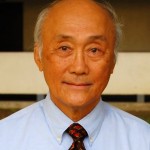
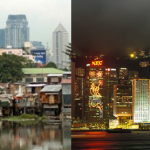

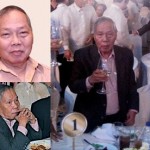


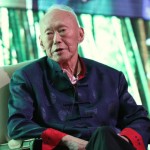

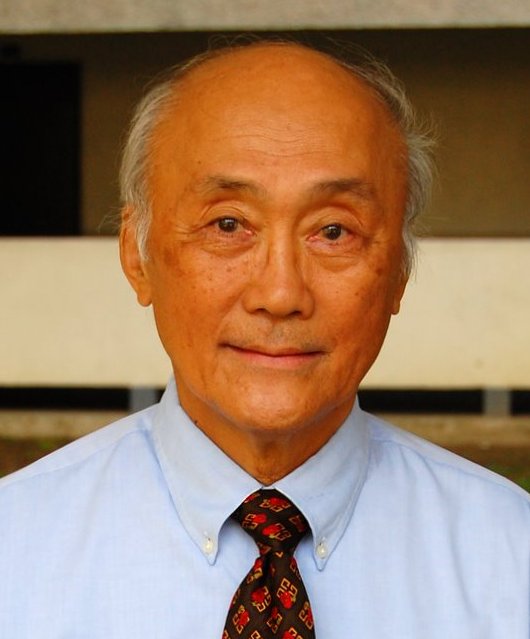
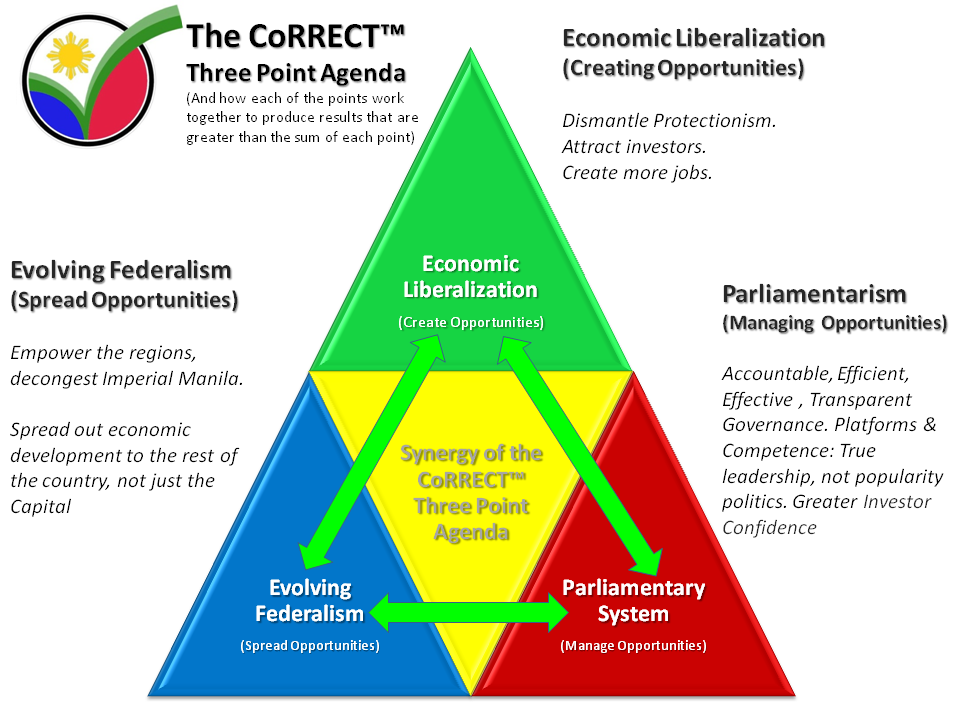
 I believe: This is a CoRRECT™ Video with a very positive message
I believe: This is a CoRRECT™ Video with a very positive message Walang Natira: Gloc-9's MTV Rap about the OFW Phenomenon
Walang Natira: Gloc-9's MTV Rap about the OFW Phenomenon
